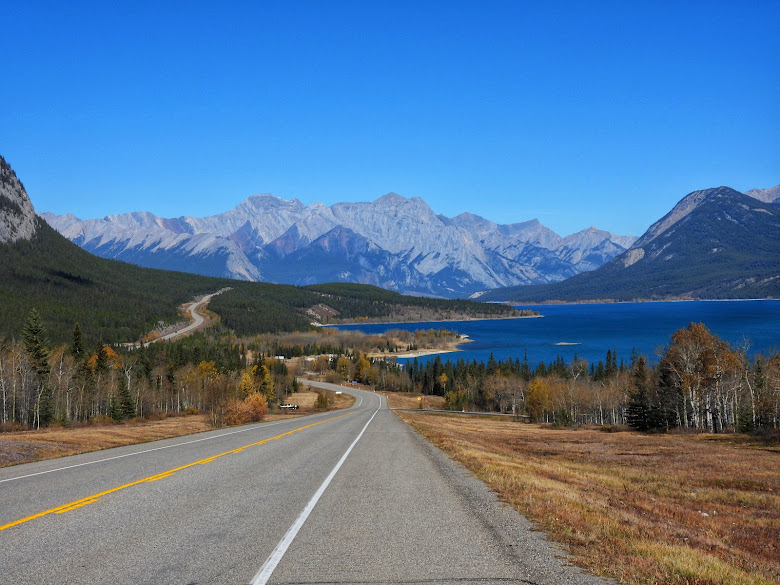On our trip through Alberta's Peace Country, we leave the town of Peace River and take Highway 684 the scenic Shaftesbury Trail which runs southwest parallel to the Peace River and is the route taken by the famed explorer Sir Alexander Mackenzie. The Trail is fully paved and our first stop is the St. Augustine Mission which is a Provincial Historic Site and is located on the grounds of the Peace River Correctional Centre. We check at the visitors centre as directed by signage but no one is there so we proceed to the Mission Church. The site has only two buildings left, the log church which was built in 1894 and the barn which was built in 1936. The Roman Catholic Mission closed operations in 1950. The church was locked but we managed to get some pictures through the windows. One of the pictures depicts the mission when it was the main centre for agriculture, education and health services for the benefit of the Indian and Metis peoples which included a residential school. The cemetery is located on the church grounds.
Of particular interest to me were the markers of two brothers who were military pilots and their father who is also buried here. These graves seemed to be out of place in this cemetery. My initial research concerning these graves has not been fruitful.
Our next stop was the MacKenzie Cairn (1929) site which contains an information kiosk and some maps and drawings of Fort Fork. Fort Fork which was located across the river from the cairn was where Alexander Mackenzie, a Canadian explorer of note, stayed the winter of 1792/73 and set out for the pacific.
Then on to the Shaftesbury Ferry. This ferry is one of six still operating in Alberta and crosses the Peace River between Highways 684 and 740 southwest of the town of Peace River. The ferry is unique in that it is powered by a tug.
- Lynn Redekopp
















I like the cute little ferry tugboat! Very unusual.
ReplyDeleteGreat post Dale and Lynn!
ReplyDeleteMore on the St. Augustine Mission. Still no luck in finding more information on the Bourassa graves.
ReplyDeletehttps://www.prrecordgazette.com/news/local-news/shaftesbury-trail-early-inhabitants-legacy-part-5
RE: famille Bourassa
ReplyDeleteFrom here: https://www.wingsmagazine.com/a-journey-through-the-clouds-12597/
"New aviators are born
Returning to Canada, Stephen [Pym] reunited with his parents in Grande Prairie, Alta. where Guy Pym had taken a position with the Veterans Land Board. In Grand Prairie, Stephen met and married Florence Bourassa, a union that produced six children and also added another layer of aviator genes. Florence’s older brother was Flight Lieutenant J.M. (Johnny) Bourassa, DFC and Bar, with 55 Pathfinder missions with 635 Squadron RAF to his credit. On his return to Canada after the war, Johnny had headed north and became a bush pilot.
In 1947, he had ferried author Farley Mowat through what is now Nunavut for research that was the foundation for the book People Of The Deer. In 1951, Johnny Bourassa disappeared on a flight from Bathurst Inlet to Yellowknife. Four months after his disappearance, his aircraft was discovered on the shore of a lake far from his intended route, but no trace has ever been found of Johnny Bourassa. Florence’s younger brother, Ray, also served as a pilot in the RCAF during the 1950s and ’60s. "